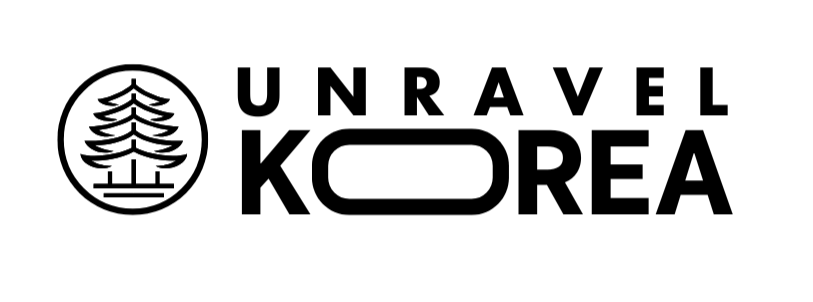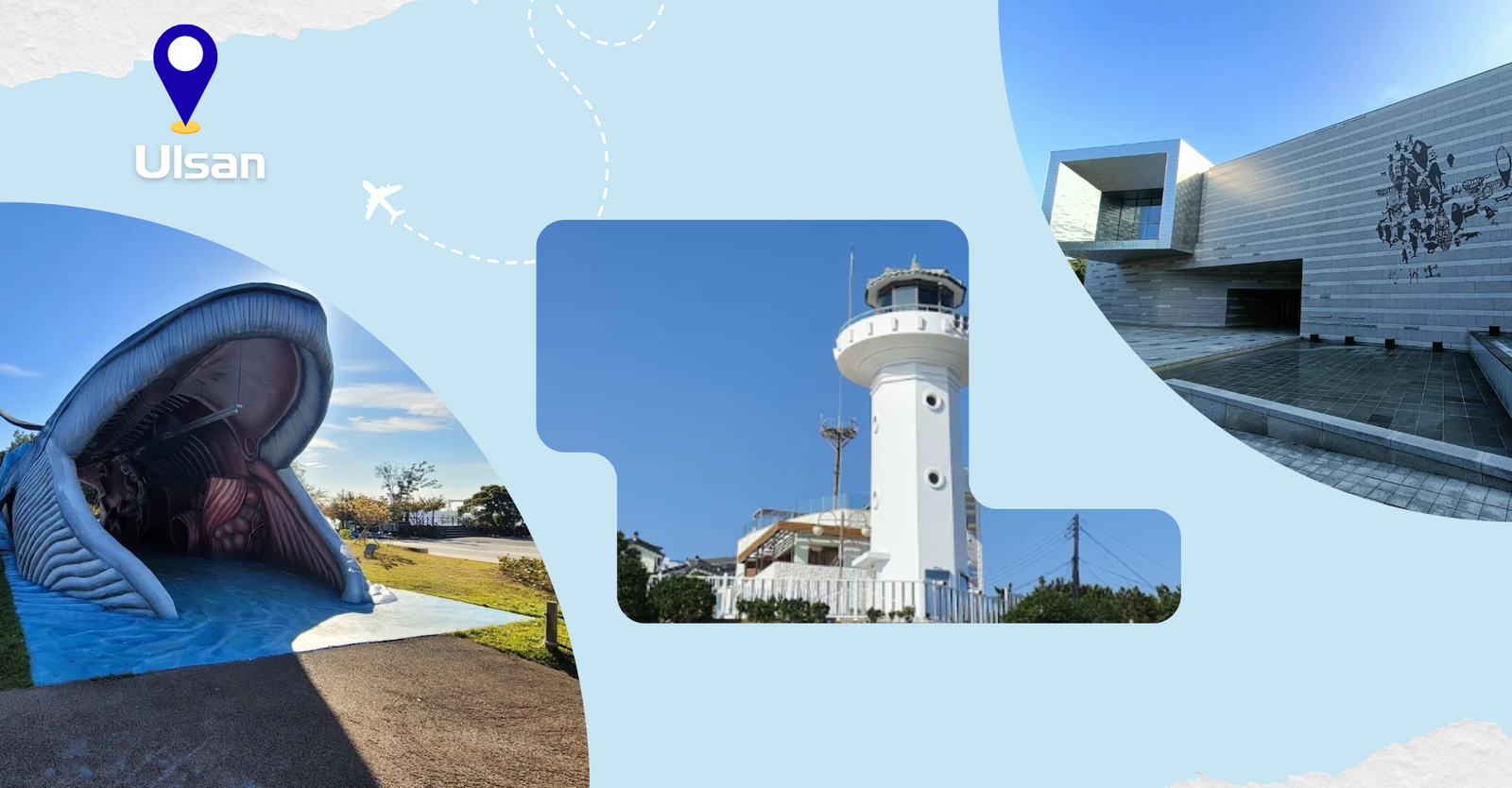Ulsan, South Korea’s seventh-largest city, is located on the southeastern coast about 70 kilometers north of Busan. Known as the “City of Whales” and Korea’s industrial powerhouse, Ulsan offers travelers stunning coastal landscapes, historic temples, world-class museums, and unique cultural experiences that remain largely undiscovered by international tourists.
Ulsan offers an authentic Korean experience away from typical tourist crowds. It combines industrial heritage, natural beauty, cultural significance, and unique attractions like whale heritage that you won’t find elsewhere in Korea. Perfect for travelers seeking something different from Seoul and Busan’s well-worn tourist trails.
Quick Facts:
- Famous for: Whales, industry, sunrise viewing
- Distance from Seoul: 370 km (2.5 hours by KTX)
- Distance from Busan: 70 km (1 hour by bus)
- Budget: 100,000-150,000 KRW per day including accommodation
- Ideal stay: 1-2 days
Getting to Ulsan
From Seoul: KTX train (2.5 hours) or express bus (4 hours)
From Busan: Bus (1 hour) or train (30-45 minutes)
By Air: Ulsan Airport (domestic) or Busan’s Gimhae International Airport (1 hour away)
Getting Around: Public buses, taxis, or rent a car for flexibility
Top Things to Do in Ulsan
1. Taehwagang National Garden (태화강 국가정원)
Korea’s second national garden and one of Ulsan’s crown jewels, featuring a spectacular bamboo forest stretching 4 kilometers along the Taehwagang River.
What to See & Do:
- Walk through the enchanting Simli Bamboo Grove with towering stalks creating a magical atmosphere
- Explore riverside walking and cycling paths
- Enjoy seasonal highlights: cherry blossoms and canola flowers (spring), lush greenery (summer), silver grass (fall), frost-covered bamboo (winter)
- Spot various bird species in the restored ecosystem
- Picnic in designated areas along the river
Practical Info:
- Location: Nam-gu, Ulsan
- Hours: Open 24/7 (main facilities during daylight)
- Admission: Free
- Time needed: 2-3 hours
- Best time: Early morning or late afternoon; spring (April-May) for flowers
- Getting there: Buses 104, 114, 124, 133, 401, 405, 412; or 10-15 minute taxi from downtown
2. Jangsaengpo Whale Museum (장생포 고래박물관)
Korea’s only whale museum, showcasing Ulsan’s whaling heritage in this former whaling capital.
What to See & Do:
- Marvel at life-sized whale skeletons including minke, gray, and sperm whales
- Experience the thrilling 5D theater with immersive whale-watching simulation
- Explore original whaling equipment, historical photos, and artifacts
- Board a restored whaling ship docked outside the museum
- Take seasonal whale-watching cruises (April-October) to spot minke whales in the East Sea
- Stroll the waterfront promenade with harbor views
Practical Info:
- Location: Nam-gu, Jangsaengpo area
- Hours: Tuesday-Sunday, 9:00 AM – 6:00 PM (closed Mondays)
- Admission: Adults 3,000 KRW; Teens 2,000 KRW; Children 1,000 KRW
- Time needed: 2-3 hours (add 3-4 hours for whale-watching cruise)
- Getting there: Buses 105, 225, 235, 715, 805
3. Whale Cultural Village (고래문화마을)
A charming recreation of a 1960s-70s Korean coastal village during the whaling era, located next to the Whale Museum.
What to See & Do:
- Walk through authentic period houses with vintage furnishings
- Browse old-fashioned shops selling retro Korean snacks
- Capture Instagram-worthy photos with colorful murals and vintage signs
- Learn about daily life in the whaling community through small exhibits
- Rent period costumes or hanbok for enhanced photos
Practical Info:
- Location: Adjacent to Jangsaengpo Whale Museum
- Hours: Daylight hours
- Admission: Free
- Time needed: 1-1.5 hours
- Best for: Photography and cultural history
- Tip: Combine with Whale Museum visit
4. Ulsan Museum (울산박물관)
Ulsan’s premier cultural institution covering the city’s history from prehistoric times to the modern industrial era.
What to See & Do:
- View reproductions of the famous 7,000-year-old Bangudae Petroglyphs showing ancient whale hunting
- Explore Bronze Age artifacts and Silla Kingdom relics
- Learn about Ulsan’s transformation into Korea’s industrial capital
- Visit the interactive children’s museum
- Browse temporary exhibitions on Korean art and culture
Practical Info:
- Location: Nam-gu, Ulsan
- Hours: Tuesday-Sunday, 9:00 AM – 6:00 PM (closed Mondays)
- Admission: Free
- Time needed: 2-3 hours
- Facilities: Café, library, wheelchair accessible
- Getting there: Buses 102, 112, 122, 132, 133, 203, 401
5. Ganjeolgot Lighthouse (간절곶 등대)
One of Korea’s most famous sunrise viewing spots, where the sun’s first rays touch Korean land each morning.
What to See & Do:
- Watch spectacular sunrise from the dramatic coastal cliffs (arrive 30-45 minutes early)
- Visit the world’s second-largest mailbox and send postcards with special postmark
- Take photos with the iconic “Hands of Harmony” sculpture
- Attach love locks with your partner
- Walk coastal paths with stunning ocean views
- Visit nearby cafés overlooking the East Sea
Practical Info:
- Location: Seosaeng-myeon, Ulju County (southeastern Ulsan)
- Hours: Open 24/7
- Admission: Free
- Time needed: 1-2 hours
- Best time: Sunrise (check seasonal times)
- Special event: Massive New Year’s Sunrise Festival with performances and ceremonies
- Getting there: Car (40 min from city center), buses 705/715, or taxi (30,000-40,000 KRW)
6. Seongnamsa Temple (석남사)
A historic Buddhist temple from 824 AD nestled on Gajisan Mountain’s slopes, offering spiritual tranquility and natural beauty.
What to See & Do:
- Explore the serene temple complex with 30+ buildings
- Admire the historic Three-Story Stone Pagoda
- Enjoy mountain views and forest walking trails
- Experience the peaceful atmosphere of one of Korea’s largest nunneries
- Hike surrounding trails in Gajisan Mountain
- Participate in temple stay programs (check availability)
Practical Info:
- Location: Sangbuk-myeon, Ulju County (western Ulsan)
- Hours: Dawn to dusk (temple stays available)
- Admission: Free (small parking fee)
- Time needed: 1-2 hours (3-4 hours with hiking)
- Best time: Spring for cherry blossoms, fall for autumn colors
- Dress code: Modest clothing recommended
- Getting there: Car (40-50 min from city center) or taxi; limited bus service
Here you can explore Yeonpyeong Island, Jeju Island, Nami Island and must visit places in Seoul
Where to Stay
Downtown Ulsan: Hotels near Ulsan Station for easy transport access
Jangsaengpo Area: Stay near the coast for whale museum and seafood experiences
Budget: Guesthouses and motels (40,000-70,000 KRW/night)
Mid-range: Business hotels (80,000-120,000 KRW/night)
Upscale: International hotels (150,000+ KRW/night)
What to Eat in Ulsan
Must-try dishes:
- Whale meat (at Jangsaengpo, though controversial)
- Fresh raw fish (hoe) at coastal restaurants
- Eonyang Bulgogi: Ulsan’s famous marinated beef
- Seafood stews and grilled fish
- Ganjang gejang: Soy sauce marinated crab
Where to eat: Jangsaengpo Port area for seafood; Eonyang district for bulgogi; downtown for variety
Best Time to Visit
Spring (April-May): Cherry blossoms at Taehwagang, pleasant weather
Summer (June-August): Whale-watching season, warm beach weather
Fall (September-October): Comfortable temperatures, beautiful autumn colors, ideal for hiking
Winter (November-March): Clear days for sunrise viewing, fewer tourists
Recommended: Fall offers the best weather and scenery balance

